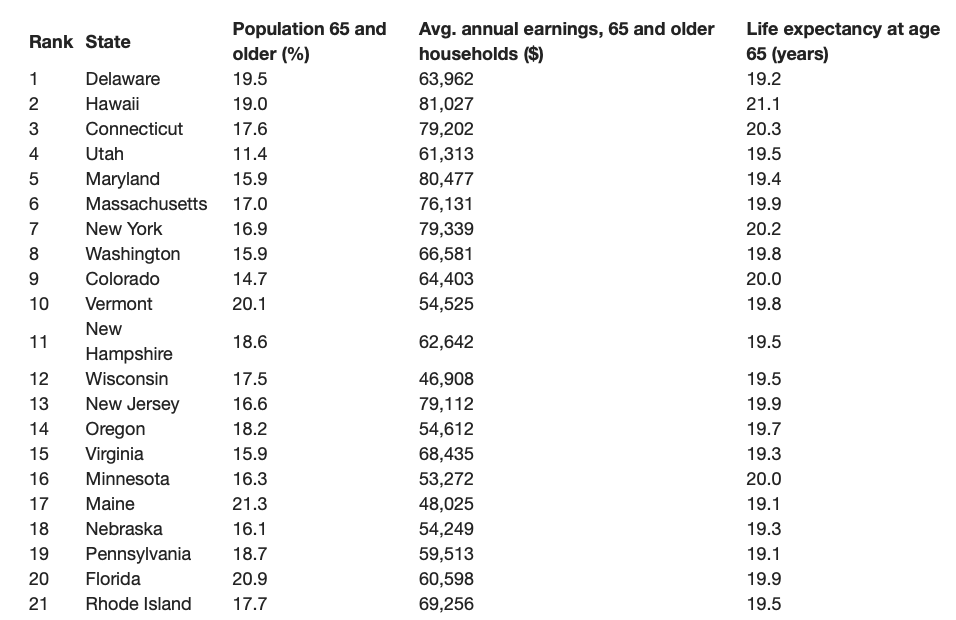By Samuel Stebbins
24/7 Wall Street via The Center Square
February 23, 2022
The COVID-19 pandemic ushered in a surge of retirements across the U.S. labor force. Experts estimate that in the first 18 months of the pandemic, there were 2.4 million more retirements than there would have otherwise been. Due in part to the historic increase, an estimated 19.3% of the U.S. population were retired as of mid-2021, the largest share in at least the last 25 years.
The two primary reasons older Americans left the workforce for good in recent months were the health risks posed by the pandemic and rising asset values – particularly in housing and the stock market – that made retirement financially feasible. Indeed, health and financial stability are two of many factors that affect overall quality of life throughout old age.
With retirements at historic levels, 24/7 Wall St. created an index of over a dozen key socioeconomic measures to identify the best and worst states to grow old in. The measures were chosen to gauge the health, financial well-being, safety, and social engagement of 65 and older populations in each state.
Much of Florida has a warm climate year-round, making it an attractive state for retired Americans from northern states. Partially as a result, 20.9% of the state’s population are 65 and older, the second largest share of any state. Retirement age Floridians are also relatively healthy. Average life expectancy at age 65 in the state is about 20 years, one of the highest averages of any state and half a year longer than the national average.
Florida also has some disadvantages, however. The state’s cost of living is slightly higher than the national average, which can put additional financial strain on retirees living on a fixed income. Additionally, 10.7% of Florida’s 65 and older population live below the poverty line, a larger share than in all but five other states.

